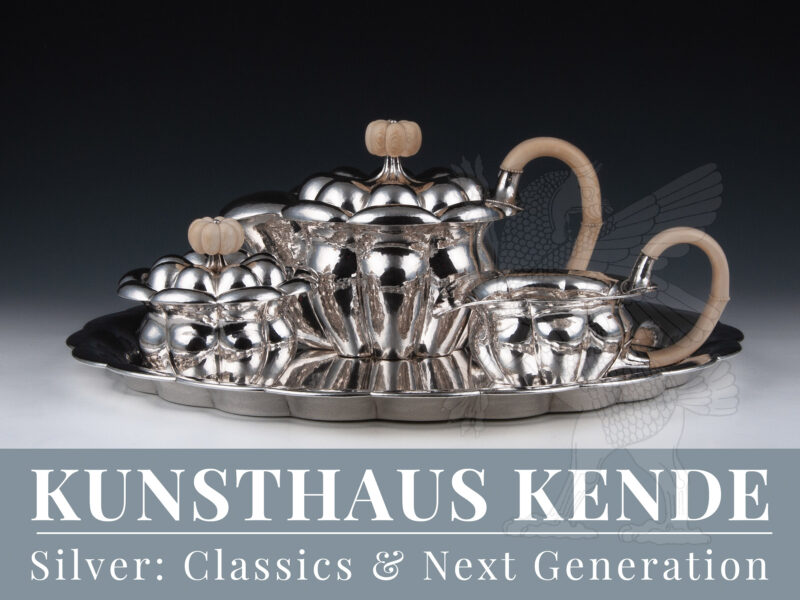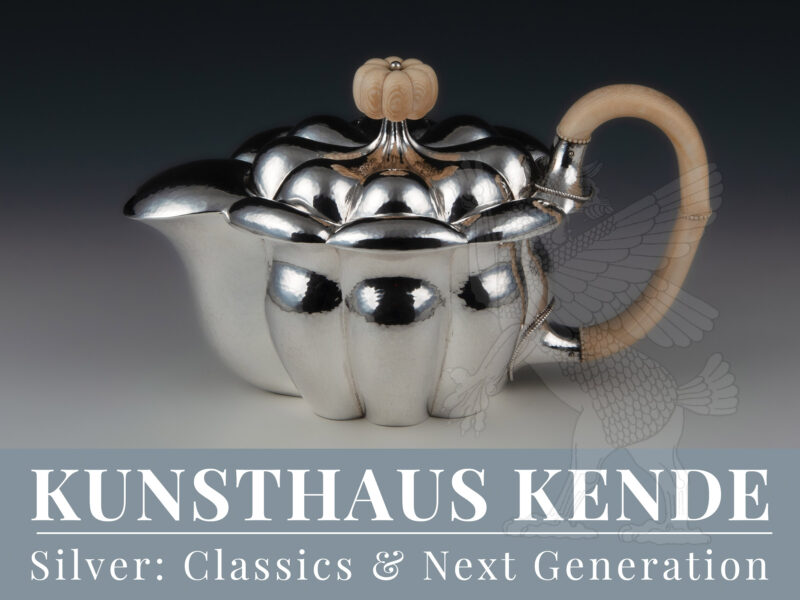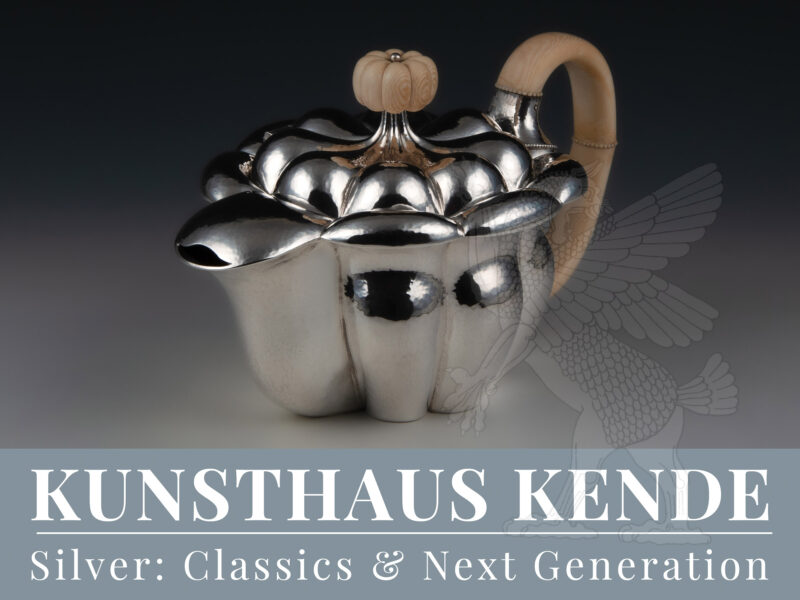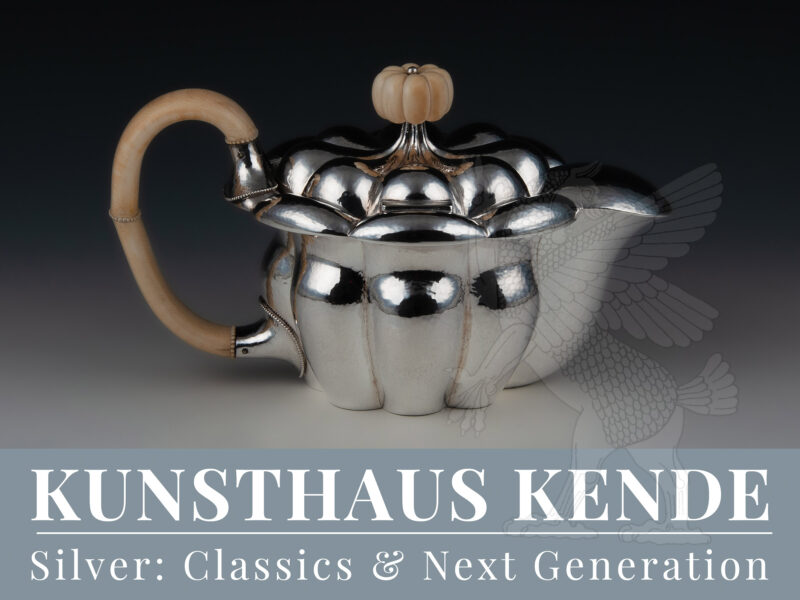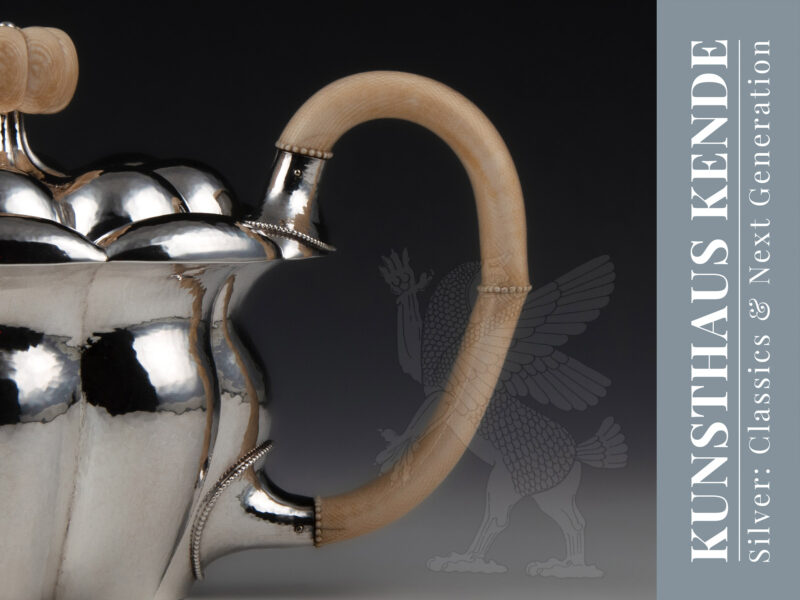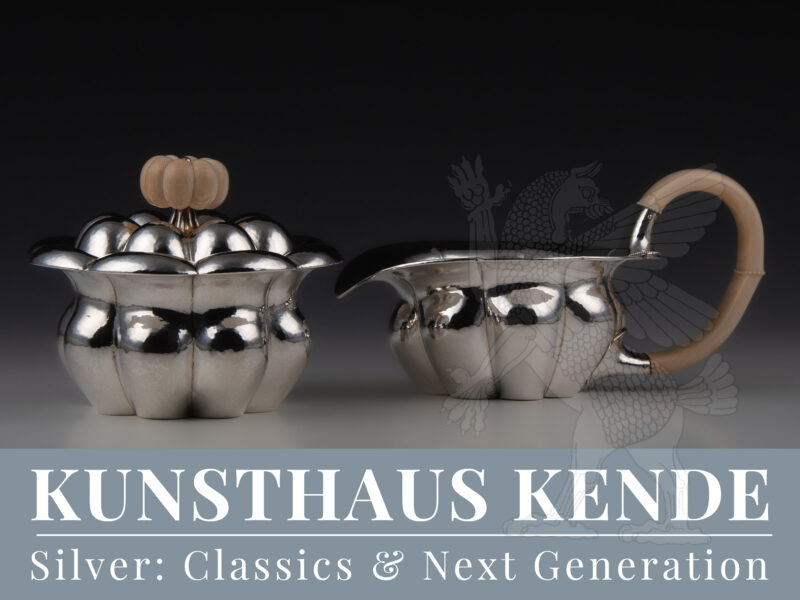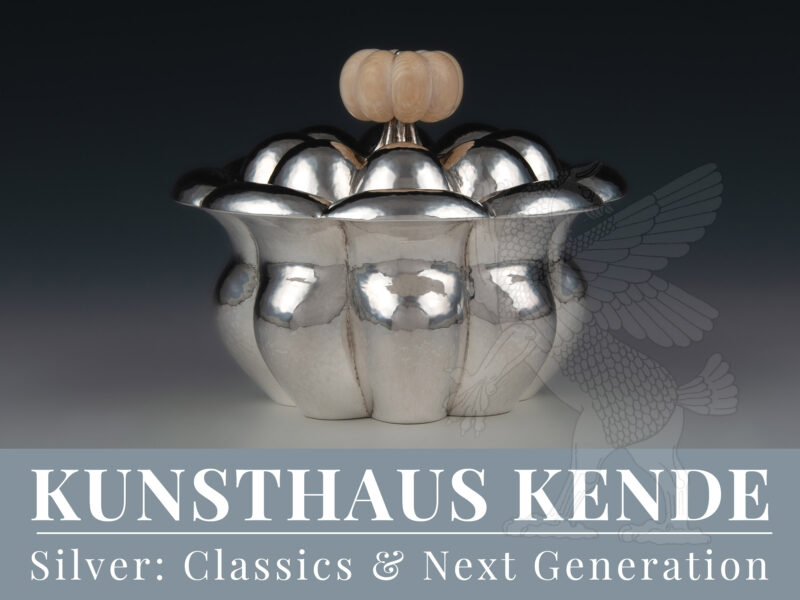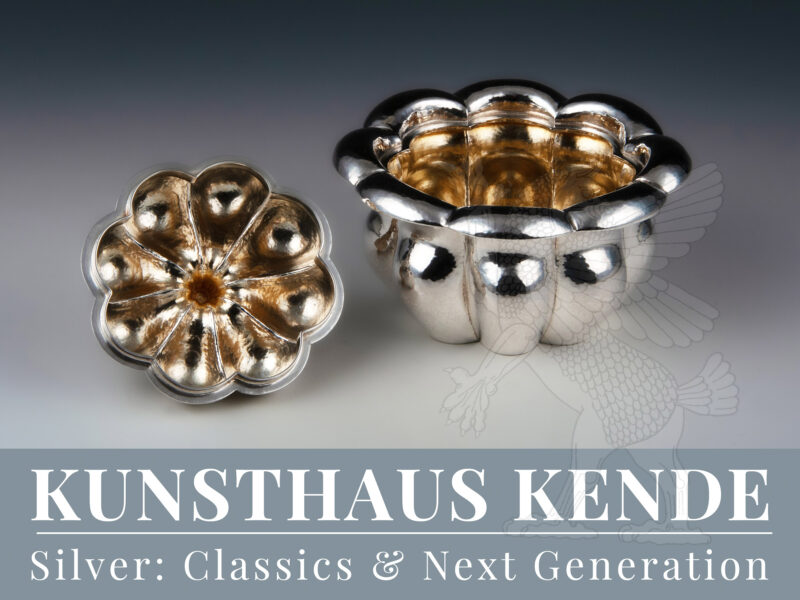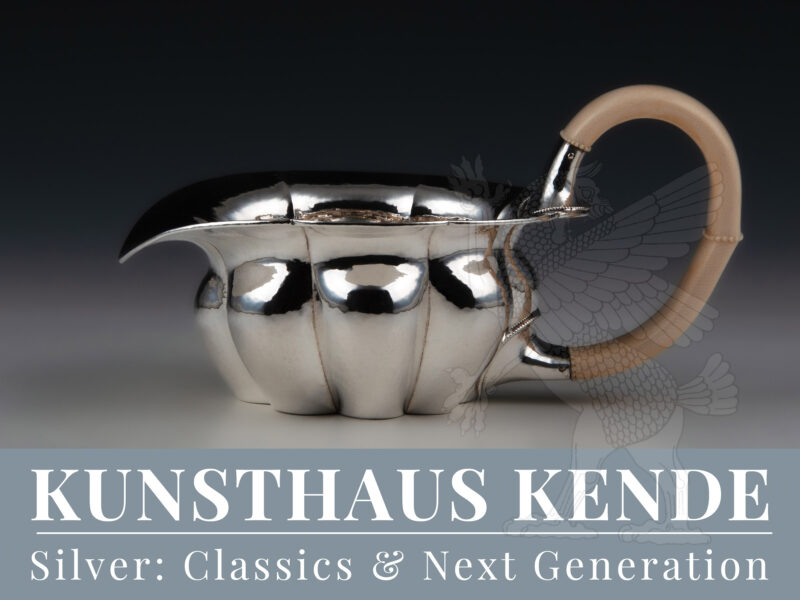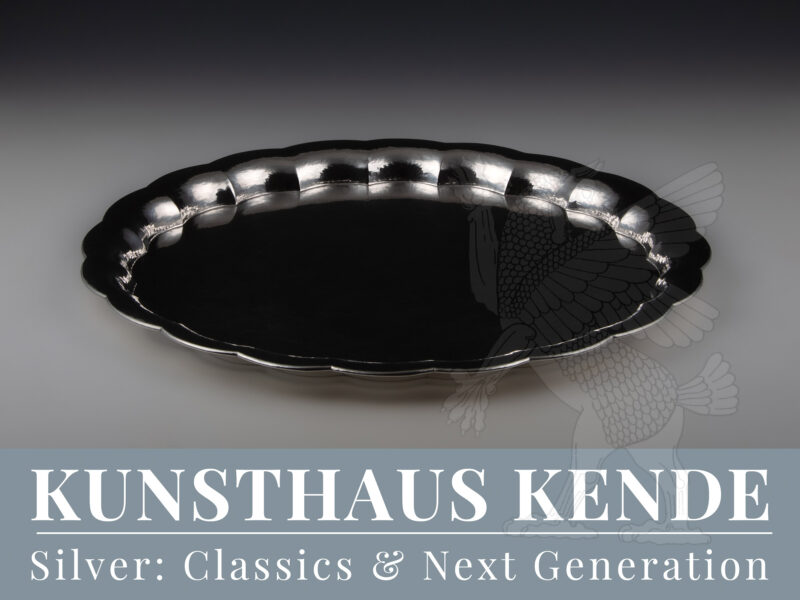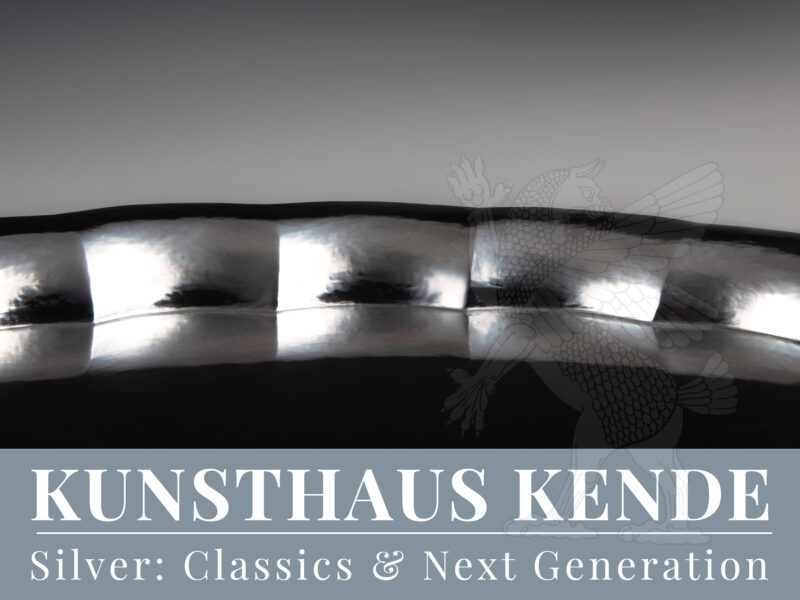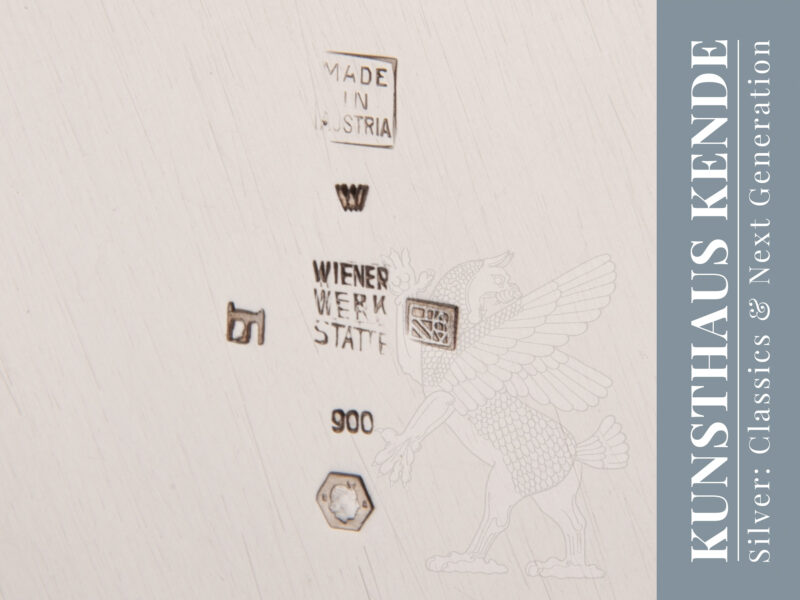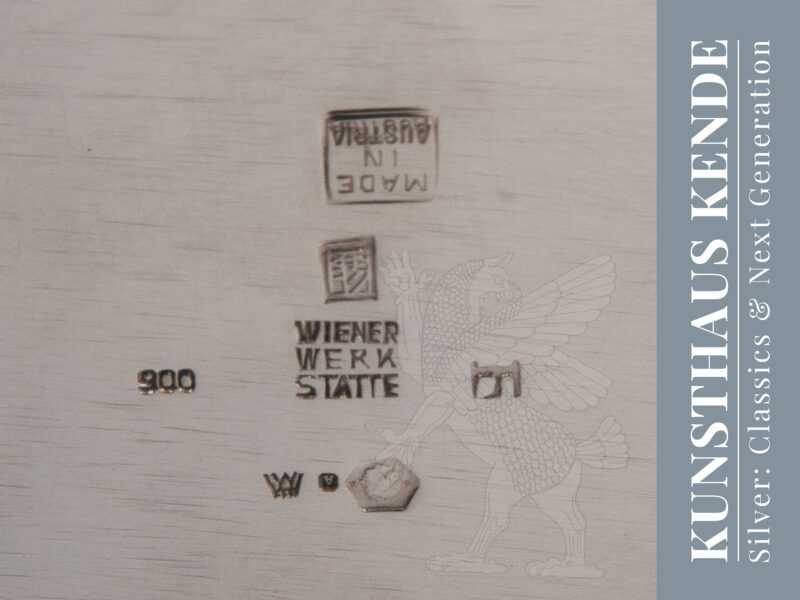Item number: 60190
Rare 900 silver tea service, Vienna circa 1920,
designed by Josef Hoffmann, executed by the Wiener Werkstätte
The bodies are adorned by sculpturally curved vertical ribs, which merge from the corresponding concave curvatures of the shoulders seamlessly into the lids. The handles of the teapot and the milk jug as well as all the knobs are made of ivory.
Impressively heavily worked tea service on a tray in 900 silver of excellent quality and in very fine, authentic condition. Particularly noteworthy in this context is the elaborate design of the handles, whose pearl bands were sculpturally cut out of the ivory and which divide the centre of the handles: the curvature above the pearl frieze was polished to a high gloss, while the area below was kept matt. A version of the of the tea service was exhibited in Paris in 1925 as part of the ‘Arts Décoratifs et Industriels Modernes’ exhibition, at which the Austrian pavilion was designed by Josef Hoffmann and Oswald Haerdtl, the objects were displayed in showcases designed by Josef Hoffmann’s master student – Christa Ehrlich.
The MAK (Museum of Applied Arts) in Vienna owns contemporary photographies of this work (see here and here) as well as the whole tea set (see here).
The service is illustrated in, among others: Exhib. Cat. MAK: The Price of Beauty, Vienna 2003 p. 270 and in Annelies Krekel-Aalberse (ed.): Modern Silver 1880-1940, London/Amsterdam, 1989, p. 203, p. 211.
Teapot: 26.8 cm / 10.55″ length, 17.1 cm / 6.73″ width, 15.8 cm / 6.22″ tall; 1062.7 g / 34.16 oz (!)
Sugar bowl: 10.6 cm / 4.17″ tall, 13.7 cm / 5.39″ diameter; 451.9 g / 14.52 oz
Milk jug: 19.3 cm / 7.59″ length, 12.2 cm / 4.80″ width 9.9 cm / 3.89″ tall (to the handle); 268.3 g / 8.62 oz
Tray: 44.8 cm / 17.63″ diameter, 39.9 / 15.7″ width, 2.4 cm / 0.94″ tall; 1173.9 g / 37.74 oz
Josef Hoffmann and silver of the Wiener Werkstätte
Josef Hoffmann (Pirnitz, 1870 – Vienna, 1956) was a highly universal and productive architect and designer, whose relevance in art historical terms can only be compared to names as Henry van de Velde. Josef Hoffmann was a professor at the Vienna School of Applied Arts as well as a founding member of the Wiener Secession and later the Wiener Werkstätte.
The Wiener Werkstätte was an association of visual artists and founded in 1903 by Josef Hoffmann, Koloman Moser and the financier Fritz Waerndorfer. The aim of the company was to integrate art into the everyday life of the public. For this reason (comparable to the artists of the Arts & Crafts Movement) the Wiener Werkstätte devoted itself to the design and production of a comprehensive range of utilitarian and furnishing objects in the spirit of the “Gesamtkunstwerk”. The repertoire ranged from cutlery, bowls and trays, tea services, glass and porcelain to fabrics, wallpaper, curtains, furniture, jewellery and children’s toys. Characteristic of the Wiener Werkstätte’s creations was always high-quality craftsmanship, high aesthetic standards and individuality. Brass, silver-plated metal and silver were used in the production. Works by the Wiener Werkstätte in silver are less common, as these were already highly priced at the time. The company broke with the contemporary ornamental Art Nouveau style and produced groundbreaking modern designs – long before the terminology of “design” emerged.
With its artistically and qualitatively sophisticated products, the company enjoyed such success at times that it operated retail stores in New York, Zurich and Berlin, thus making the “Wiener Werkstätte” a brand of international renown. With the economic crisis of the interwar period and the increasing impoverishment of the middle class, the Wiener Werkstätte also got into economic difficulties, which led to its bankruptcy in 1932.
Alongside Koloman Moser and Dagobert Peche, Josef Hoffmann was the most important designer of the Wiener Werkstätte. As an extremely versatile artist and versatile genius, he produced an impressive number of designs that differed stylistically from one another to such an extent that it is hard to believe that they were created by the same designer.


